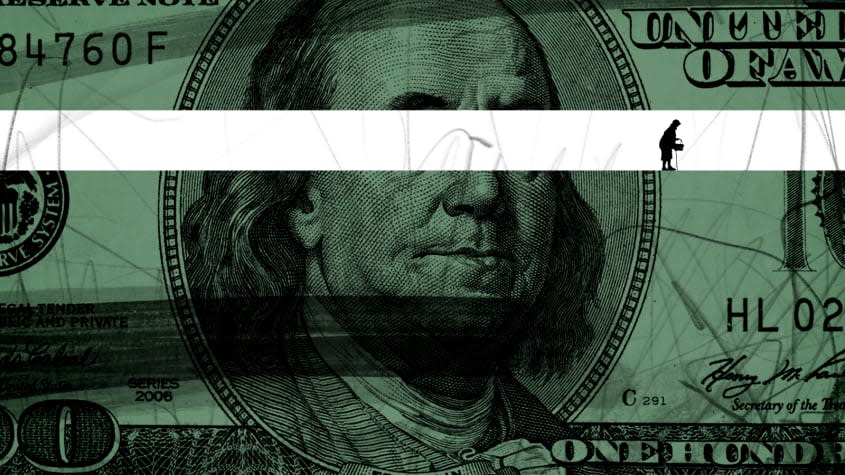Hey Democrats: Starving people into jobs isn't working

Last month, the pandemic unemployment benefits — what I've been calling super-unemployment — expired, with the support of both Republican governors and the Biden administration. The thinking, at least in part, was that this would help push workers into new jobs: Too many Americans had gotten fat and lazy living off unemployment benefits, and it was time to starve them into the labor market.
Today, the September jobs report came in, and that thinking has been proved wrong. Just 194,000 jobs were created last month — as compared to hopeful economist predictions of 720,000. As Matt Bruenig writes at the People's Policy Project, "This was the worst month of job growth since Biden became president and the second-worst since May of last year when the pandemic labor market recovery began." America is still about 5 million jobs short of the pre-pandemic total. At this rate, it will be around December 2023 before that gap is closed. Starving people into jobs isn't working.
Why not? Any theory must be somewhat speculative at this early date, but the most obvious factor here is surely the coronavirus. September saw the second-worst surge of COVID-19 cases since the start of the pandemic, and that has previously shown a dampening economic effect. Even with available vaccines and pandemic fatigue, people are generally less willing to go out and spend money in shops and restaurants if a deadly disease is on the rampage.
That creates a knock-on problem for families with younger children. Women's labor force participation fell slightly in September, which almost certainly has to do with child care. In-person school has restarted in most of the country, and Republican officials in many states have forbidden mask mandates or other pandemic control measures in the classroom. The result has been tens of thousands of infected children stuck at home for days or weeks at a time, with millions more forced to quarantine after exposure. Child care was already incredibly expensive before the pandemic, and in many states now it is straight up unavailable, so many parents have been forced to stay at home to care for their kids some or all of the time.
Second, cutting super-unemployment removed tens of billions of dollars of spending from the economy. That money was going into the pockets of people likely to spend most of it. The Economic Policy Institute estimates that ending the program cut incomes by $144.3 billion and consumer spending by $79.2 billion this year. That means businesses have fewer sales — and fewer job openings.
Third, we're still dealing with general labor market disruptions caused by the pandemic. Many front-line workers are burnt out from working through this nightmare. Others died from COVID-19 or are still dealing with "long COVID." Medical providers especially vulnerable to staff burnout — hospitals, nursing homes, and residential care facilities lost a combined 46,000 jobs in September — no doubt thanks to the surge of unvaccinated COVID-19 cases that crushed many hospitals in August and September.
Together, all this means that even with super-unemployment, we probably wouldn't have gained a million new jobs last month. So long as the coronavirus is still raging, full economic recovery will not happen. But many Republican states cut off super-unemployment somewhere between June and August, and they saw worse job growth than states that kept it. And now that super-unemployment is gone entirely, again we see a job growth nosedive. Contrary to bipartisan forecasts, had we kept the benefit, it's reasonable to suppose we'd have added a couple hundred thousand more jobs this month.
But all that is beside the point. The point of super-unemployment was not to create jobs. It was to tide people over until the pandemic passed. That has not happened. At time of writing, the seven-day average of new cases was trending down nationally, but it's still at nearly 100,000 cases and over 1,700 deaths per day. (And those numbers are trending up in some states, including North Dakota, Michigan, Pennsylvania, and Minnesota.) Given the abysmal vaccination rates in big chunks of the Midwest and Great Plains, I would guess there's at least another half a year to go before anything close to normal conditions return.
It is frankly staggering how blithe the political class has been about this. Back in March, when Democrats passed the American Rescue Plan, daily cases were at about 50,000 and trending down. Party elites apparently assumed the vaccines would finally end the pandemic (at the time, I did too). In the ensuing months, a handful of small business tyrants whined to the press that they couldn't find enough workers to fill crummy, low-paying jobs, so about three quarters of Washington D.C. decided that the working class needed to be starved into working.
I'd expect that of Republicans. But Democrats control the presidency and Congress, and they could extend the pandemic rescue measures at any time. Instead, it seems they've become used to mass death and mindlessly eager to shove downtrodden workers back into their customary position at the bottom of the social hierarchy. Outside of a handful of leftist members of Congress, they don't even notice when their plan to starve people into jobs doesn't work.
Any sensible — let alone progressive — party would keep pandemic policies in place until the pandemic is over. Apparently Democrats are neither.
You may also like
'Wholly inappropriate': Kyrsten Sinema responds to Arizona State University bathroom confrontation
Afghans reportedly escaped Kabul through a CIA gate so secret not even the Taliban knew it existed

